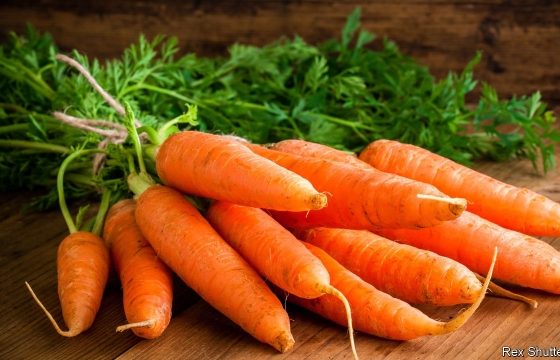
A bunch of freshly harvested carrots
Growing carrots on your backyard can be so satisfying. They are juicy, they mature fast, and more importantly, they are very nutritious. Did you know that a raw carrot has 0.2% fat, 2.8% dietary fiber, 0.9% protein, 9% carbohydrates and 88% water? More so, carrots can be grown all year round (including in winter) and can be planted in raised beds or in containers.
Here in Australia, over 260,000 tonnes of carrots are produced annually. This is still too little to feed the entire nation, and the surplus has to be imported from China. In this post, we’ll share everything you need to know about growing your own carrots.
Essential factors to consider when planting carrots;
• The best time to plant carrot seeds is 3 to 5 weeks just before the last spring. Repeat planting after every three weeks so that you have an extended harvest.
• Carrots do well when grown directly under full sunlight; unless the sun is too hot. In such instances, you can use a moderate shade above the carrots.
• The soil should be free of stones so as to avoid obstruction on the path of the growing root carrot.
• Till the soil effectively so that the carrots grow easily.
• Carrots do best in loamy or sandy soil.
• Don’t use too much fertilizer or manure to avoid harvesting ‘fork’ like carrots.
Planting Carrots
• Prepare rows that are 1 ft apart then plant your carrot seeds 3 to 4 inches apart.
• Cover the planted seeds with fine soil that does not crust over when it gets dry.
• Ensure you keep the soil moist by shallow watering frequently.
• Carrots take 2 – 3 weeks before showing sign of life (germinate).
Care of growing carrots
• Gently mulch to help retain moisture, speed up germination, and block the hot sun from reaching the roots.
• When the plants get to an inch tall, trim with scissors so that you have a spacing of about 3 inches.
• Water weekly (at least one inch of water)
• Keep weeding when necessarily.
• Use a balanced fertilizer at the 5th or 6th week.
Common Pests and Diseases that affect Carrot plants
• Common pests that affect carrot plants include wireworms and flea beetles.
• Aster Yellow Disease –It causes the carrots to discolour and have hairy roots. It is spread by pests as they go feeding on one plant to another. It can be controlled by the use of pest control like leafhoppers and also by ensuring frequent weeding.
Harvesting Carrots
From 2 – 3 months, carrots should be mature and ready for harvest. Another way of determining maturity is the top becomes thick and bright green with a height of 8 – 0 inches long. The base of the carrot reaches around ½ inch in diameter.
Storing freshly harvested carrots
Carrots, if not being used immediately after harvest, should be quickly stored to preserve nutrients.
First, twist off the green leafy tops, and then gently scrub off the dirt under tap water. Allow them to dry completely before sealing them in an airtight plastic bag and refrigerate.
In conclusion;
Carrots have significant health and beauty benefits like boosting the Immune system, Keeping hair health, creating glowing skin, preventing wrinkles, protecting teeth, and nourishing dry skin. Besides, there’s something magical about eating food you’ve grown at home, it’s a great way to eat healthy.